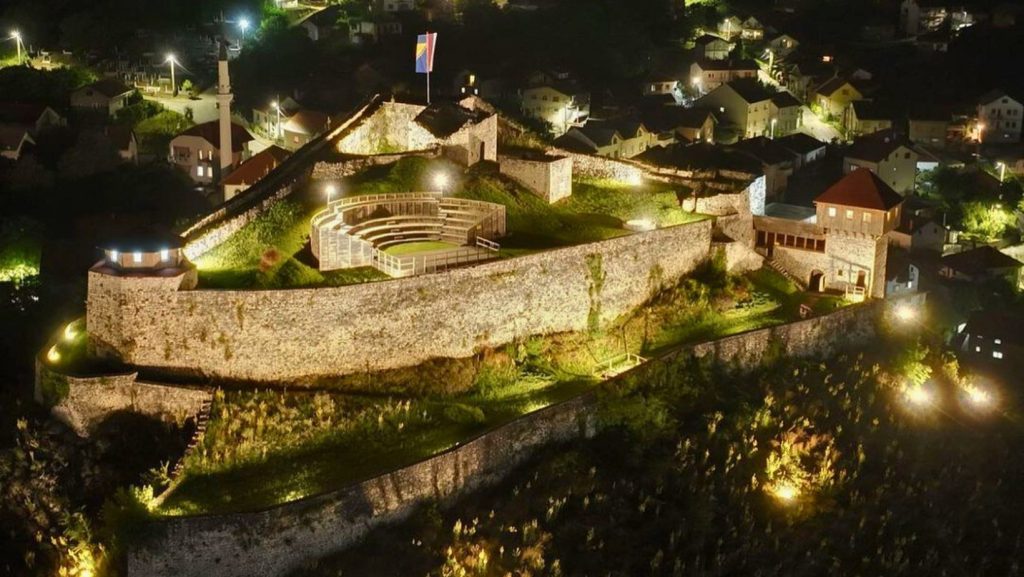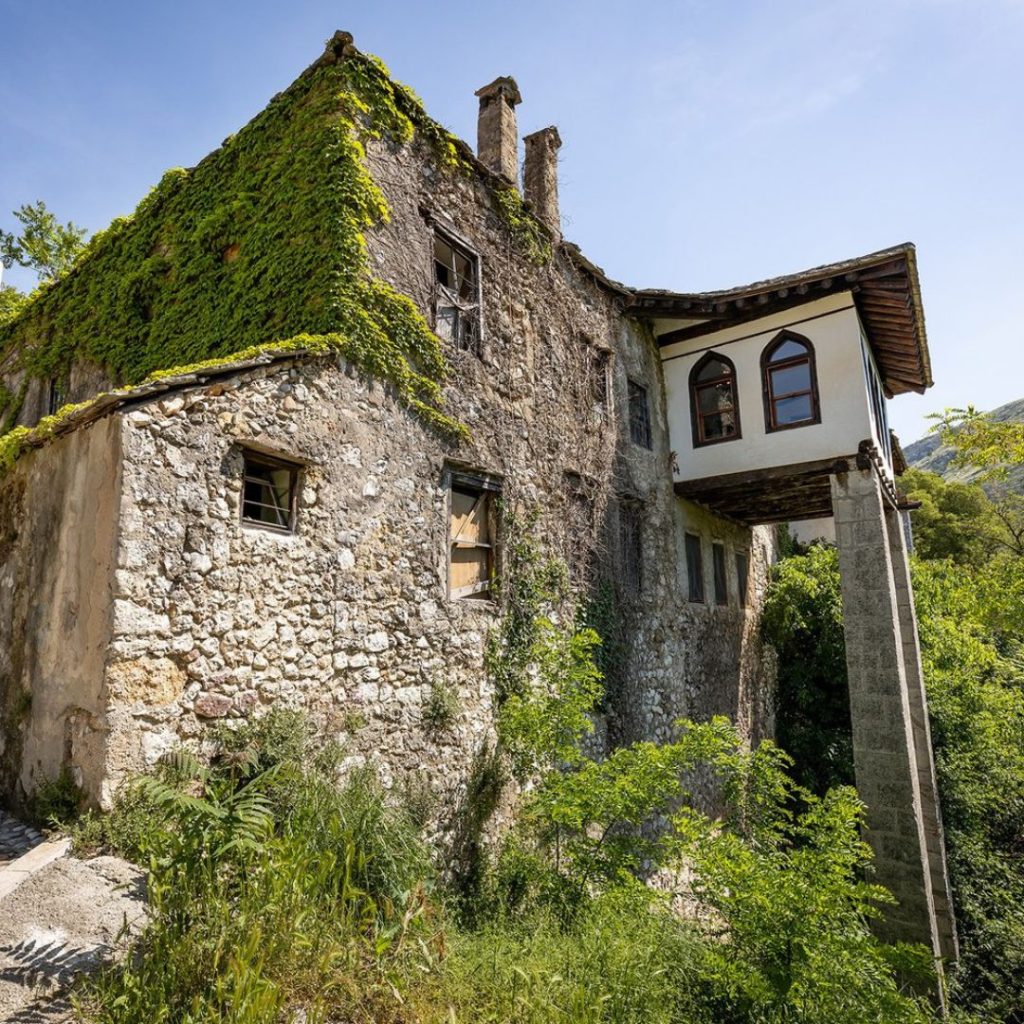
Bišćević House, dating back to the 17th century, is a beautifully preserved example of residential architecture from the Ottoman period in Herzegovina. This historical gem offers a glimpse into the high culture and refined living standards of the Muslim population of the time.
In 2004, the Commission to Preserve National Monuments declared the Bišćević–Lakšić residential complex in Mostar a national monument of Bosnia and Herzegovina.

Located by the Neretva River, it stands as a prime example of Ottoman-era residential structures in Mostar.
While the current Bišćević–Lakšić complex dates to the late 18th and early 19th centuries, the site has likely been used for residential purposes since the early 17th century.

Initially belonging to the prominent Bišćević family, the complex was divided into three separate units in the late 19th century due to the family’s growth.

Bišćević House: Still owned by the Bišćević family descendants, this house has been transformed into a private museum showcasing traditional Ottoman-style living.
Lakšić House: The southern part of the complex, belonging to the Lakšić family, continues to serve as a residential space.
The complex remains relatively unchanged and consists of two main parts:
- Selamluk: The men’s area for guest reception and business, represented by Bišćević House.
- Haremluk: The family’s private and intimate area, exemplified by Lakšić House.
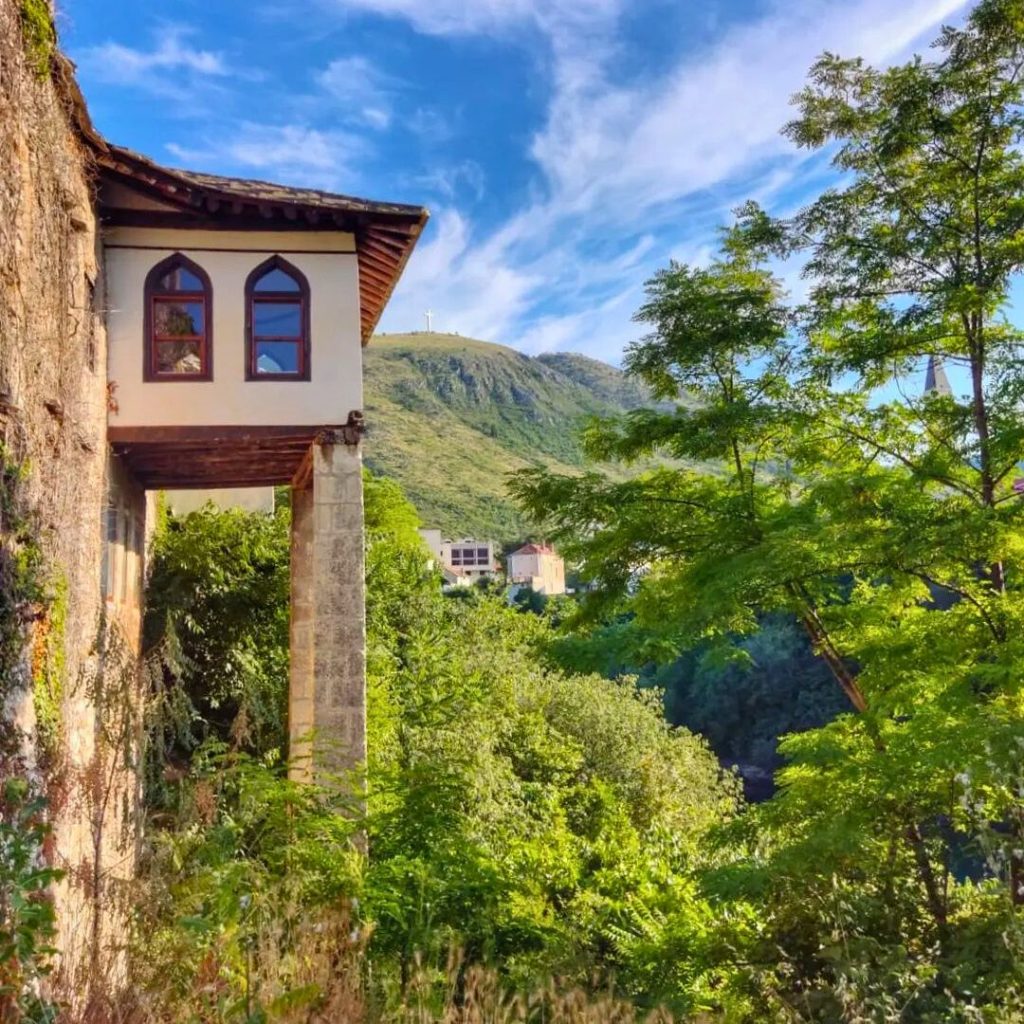
Bišćević House, enclosed by a high courtyard wall and hidden from the access road, faces the inner courtyard and the Neretva River.
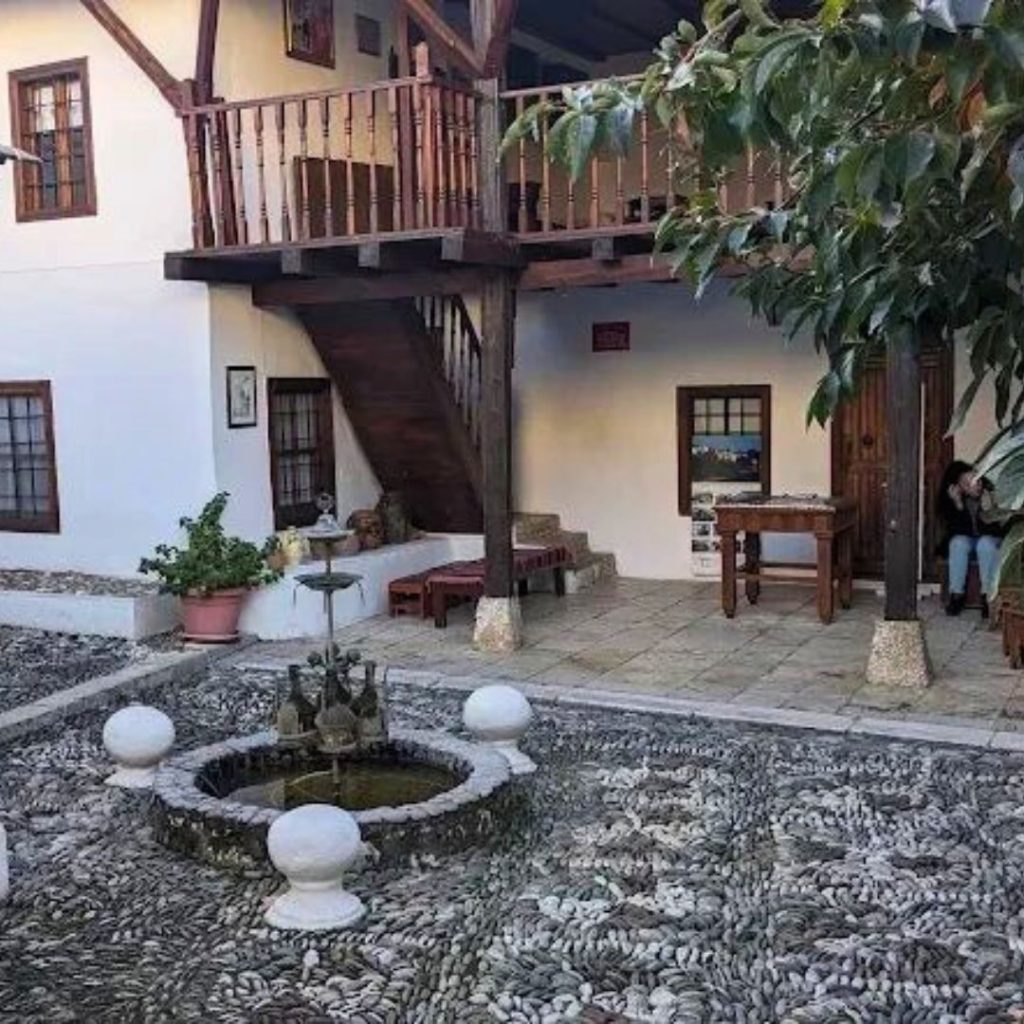
The semi-open spaces, such as the ground-floor hajat and the upper-floor tavan, connect the rooms and serve as living areas. Rooms on both floors open towards the river.
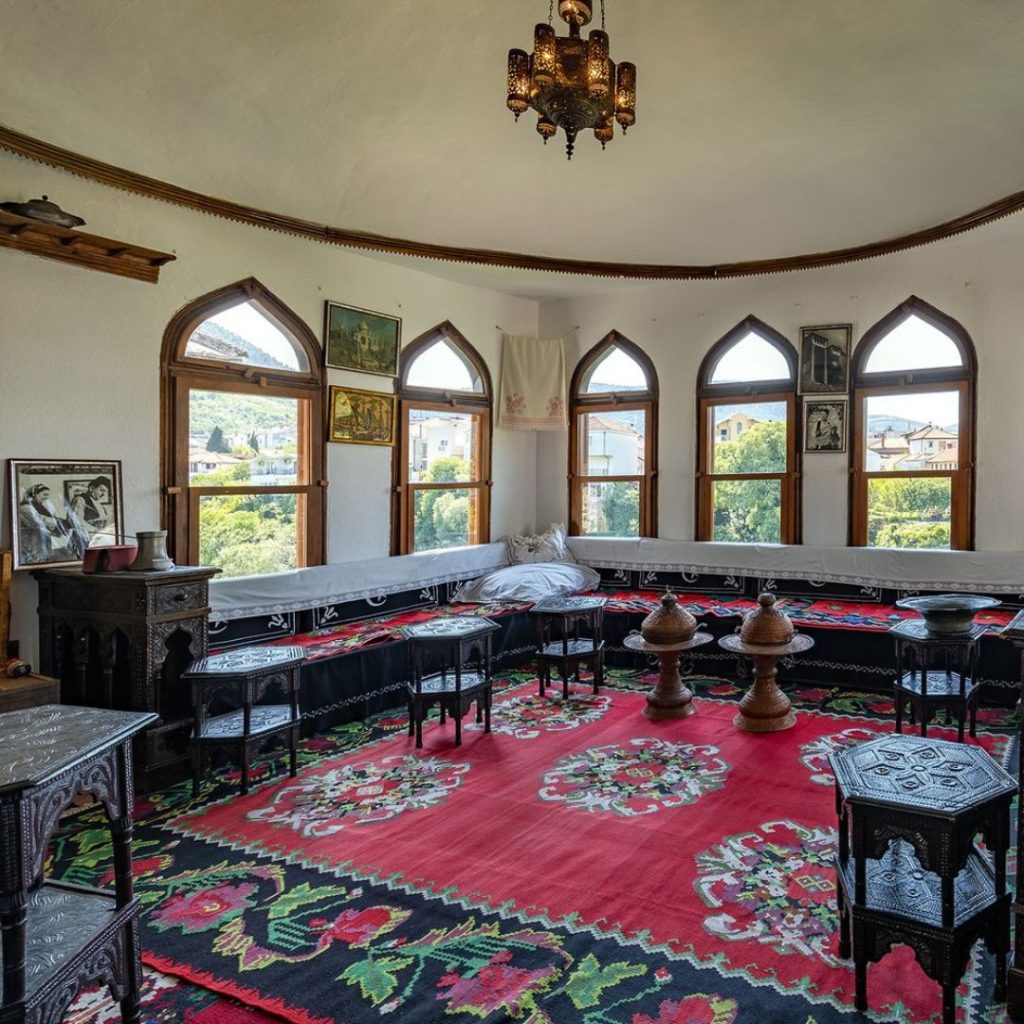
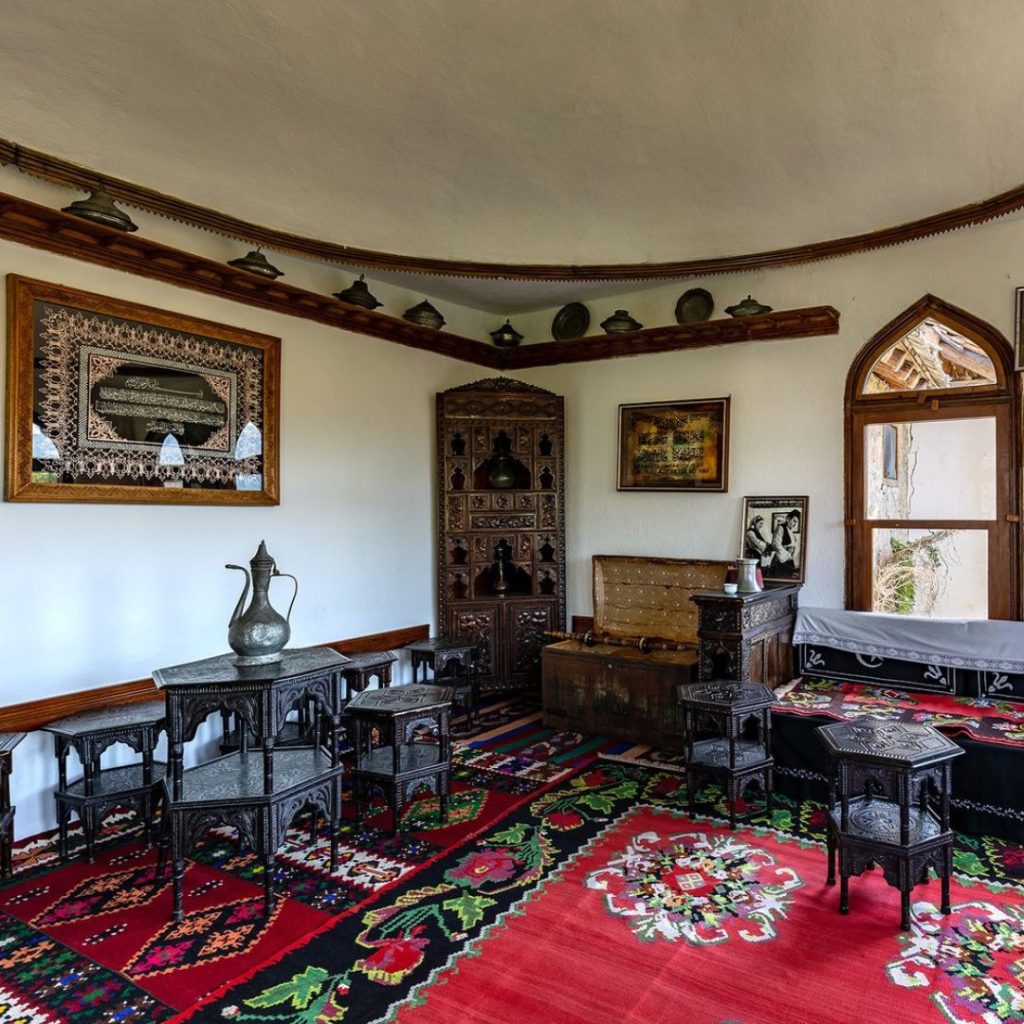
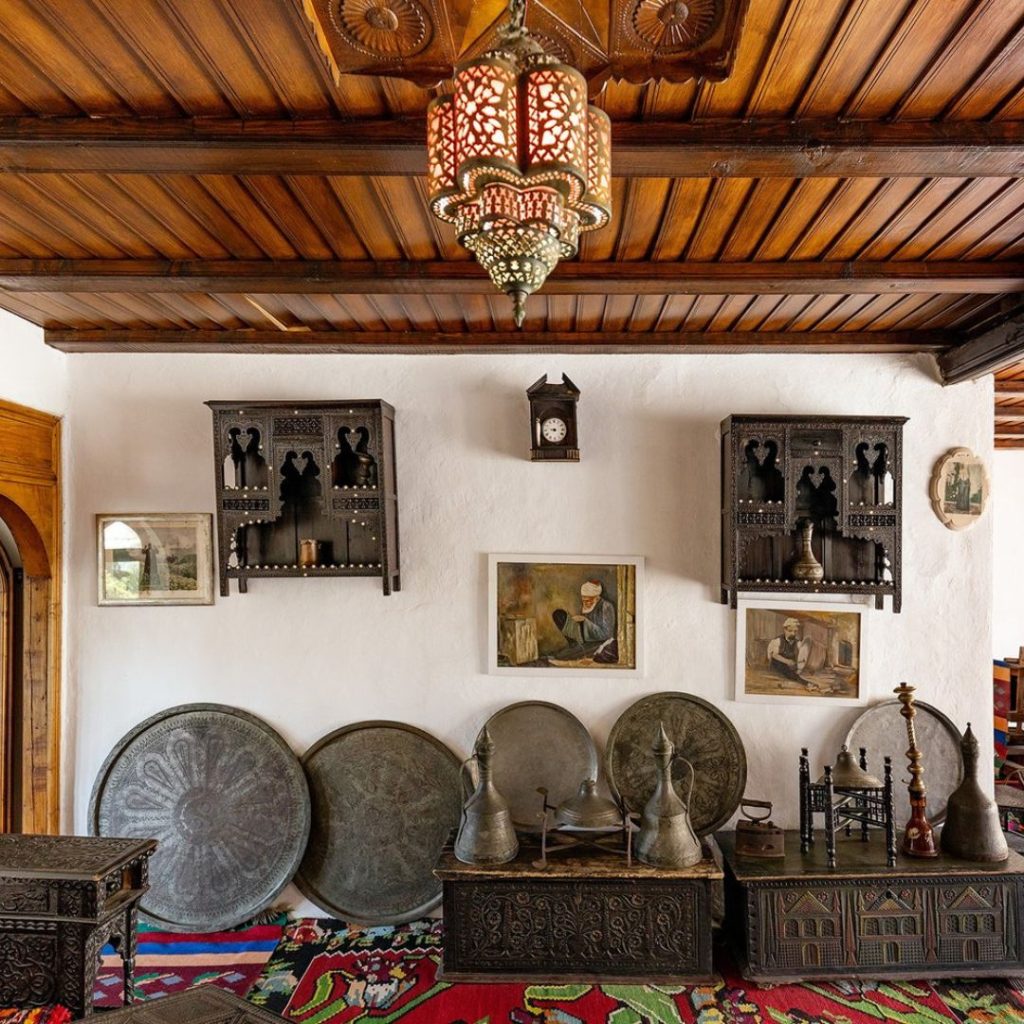

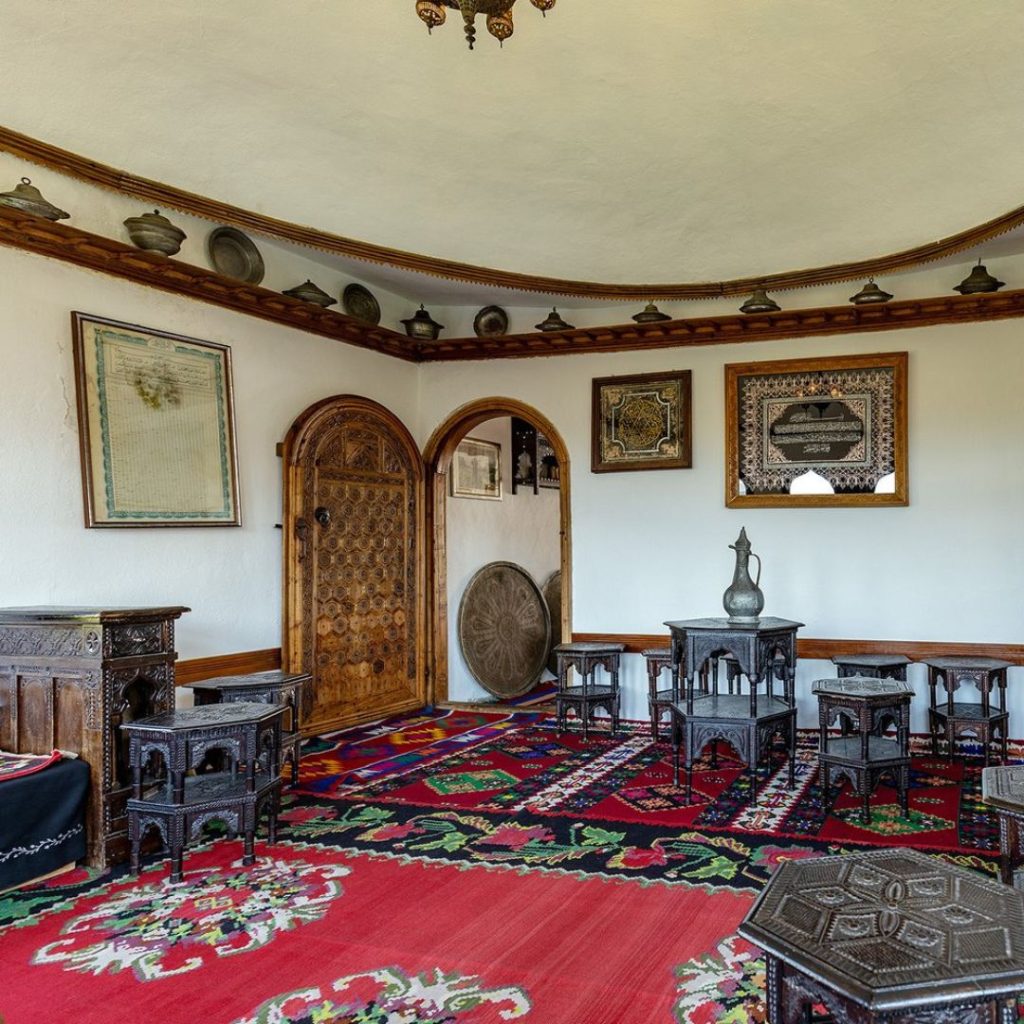
The house’s decor includes a built-in divan under the windows, richly carved corner cabinets, painted chests, wooden shelves, and recently added carved tables and chairs. The walls feature numerous calligraphic panels and photographs.
Originally part of the Bišćević complex, Lakšić House was designed for private family life. It is larger, less ornate, but has a more spacious courtyard. Like Bišćević House, it is enclosed by a high wall and oriented towards the courtyard and the Neretva River.
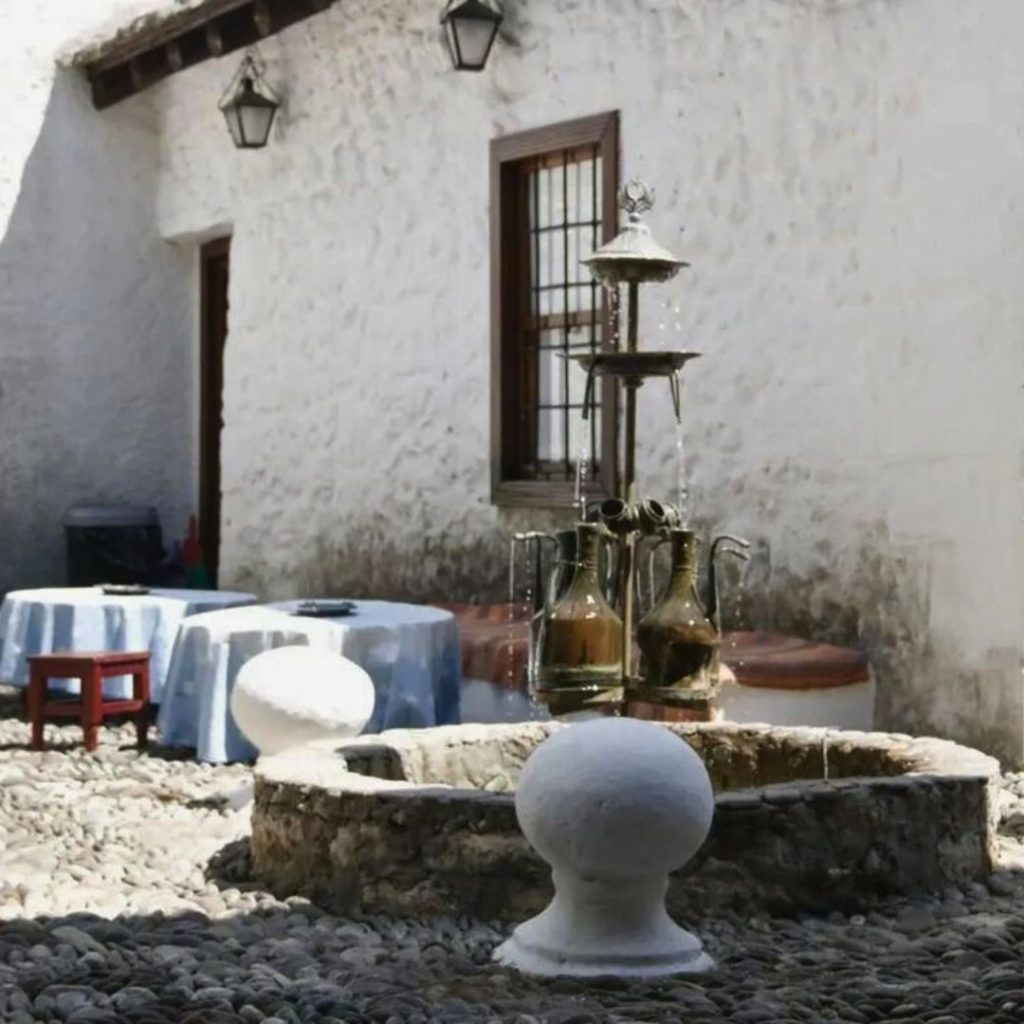
During the war from 1992–1995, Bišćević House suffered damage from heavy artillery, which affected the roof and the economic courtyard’s storage building. Post-war restorations have since repaired these damages. Similarly, Lakšić House also sustained significant damage during the same period but has been restored.
As you explore Mostar, take the time to visit other preserved Ottoman houses, such as the Kajtaz House and the Muslibegović House.


